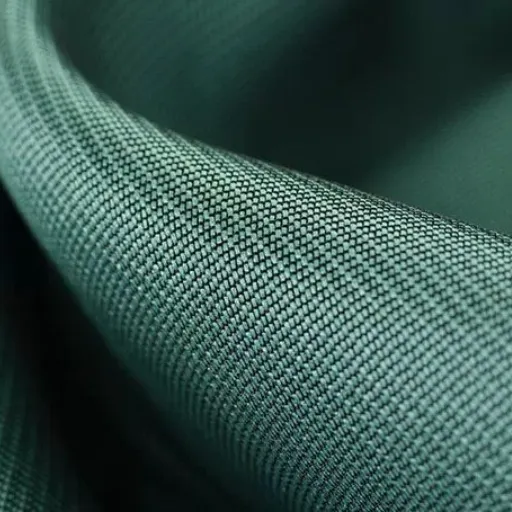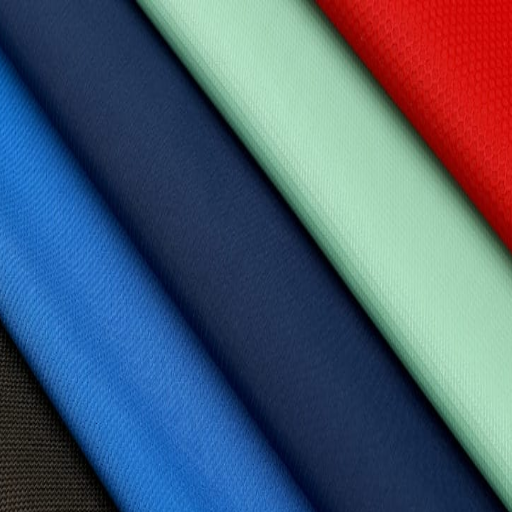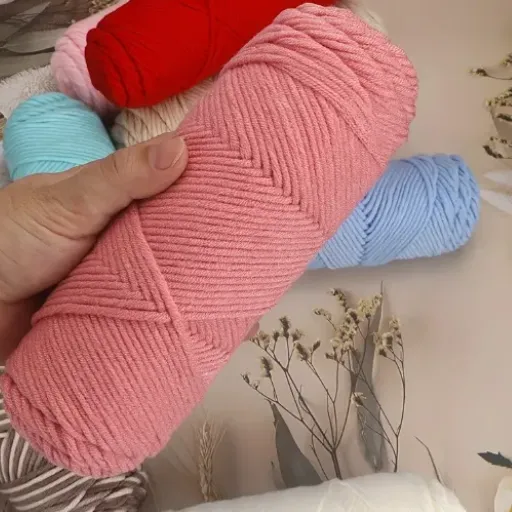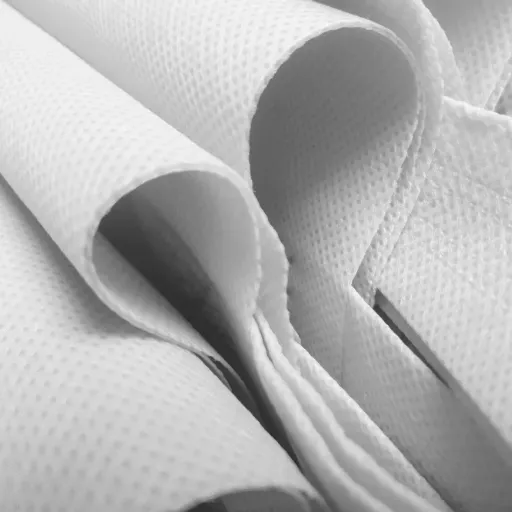The perfect creation is the result of choosing the perfect yarn. With an infinite number of choices to pick from, the task seems quite overwhelming. Both acrylic yarn and wool yarn have earned great popularity for the distinctive qualities they carry and the versatility in knitting and crochet. Whether you have extensive experience or are new to the field, understanding the distinguishing characteristics between the two will serve as a basis for producing beautiful and useful projects. We will run a comprehensive comparison concerning texture, durability, costs, etc., to help you decide on your next masterpiece. Prepare yourself to unravel the mysteries of acrylic versus wool and elevate your craft to the next level!
Acrylic Yarn Properties
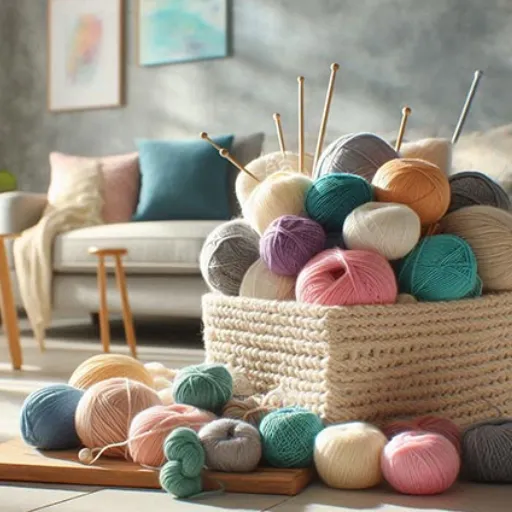
Understanding Acrylic Fibers
Acrylic fibers are synthetic fibers made from the polymer acrylonitrile. The fibers are created chemically, changing the polymer into long, thin strands that can be spun into yarn. Because it is inexpensive, readily available, and versatile, this acrylic yarn has emerged as one of the preferred choices among crafters at all levels of skill.
Durability is one feature that really stands out when looking at acrylic yarn. It resists wear and tear and, therefore, is an ideal candidate for projects that will be heavily used or washed daily. Acrylic yarns are basically machine-washable and, in most instances, retain their shape and color over time; this essentially becomes a great selling point for blankets, hats, and scarves. Moreover, its lightweight nature makes it comfortable to work with and can be used for several other types of projects.
The color and texture offerings served an important role alongside the choices other than wool and acrylic available to the cracker to project their thought in some cases. This drawback may also prove useful, such as making the fur warmer. This, though, offers a cost-efficient finishing touch to any craft, along with easier care and upkeep.
Advantages of Acrylic Yarn
Being inexpensive, versatile, and easy to maintain is why acrylic yarn has developed a loyal following. Some important perks include:
- Cost-Effective: Durability acrylic yarn costs considerably less than natural fibers such as wool or cotton. This makes it a product worthy of consideration by the economically minded craftsperson or designer seeking the best results.
- Color Range: An unlimited array of colors comes from acrylic yarns, allowing the artist to realize practically any color he requires for his project. This freedom of choice fosters creativity and in some ways can be useful when matching the pattern or theme on which a designer is working.
- Durability: Being comparatively strong, this acrylic fiber is deemed very durable to withstand the impact of wear and tear. Such yarn is the best choice to undertake heavy working projects like blankets, scarves, or sweaters, thereby keeping the actual product for a long time.
- Simple Care: The fiber is washed in the washing machines and dries quickly. It does not shrink or stain; hence it is best for items needed on an everyday basis and require frequent cleaning.
- Lightweight and Warm: Although it is truly lightweight, acrylic yarn provides good warmth and thus, is great for building winter wear and accessories. It gives mild insulation just as wool does, but heavier.
- Non-allergenic Nature: For people with a certain sensitivity toward natural fibers such as wool, acrylic yarn serves as a hypoallergenic alternative, as this fiber does not carry irritants that can trigger allergies, and thus it’s a very good option for sensitive skin.
- Environmental Perspective: Some of the new acrylic yarns use recycled material that goes toward promoting sustainability. There are innovations in manufacturing in this regard to reduce the environmental impact of acrylic in response to consumer demands for greener choices.
And all these advantages clearly highlight the reason for acrylic yarn being an ongoing favorite among crafters and manufacturers.
Comparison with Natural Fibers
Comparison between acrylic yarns and natural fibers sets forth a number of differences affecting their usage in crafts and manufacturing. Wool, cotton, or silk, deriving from either animal or vegetable sources, can feel breathable to the flesh, soft to touch, and also be biodegradable. However, depending upon the treatment to which they are subject, these fibers may actually require more maintenance. Some may shrink with washing, wrinkle under pressure, or be very sensitive to the particular method of washing applied to them.
What really sets acrylic apart from all these synthetic yarns is that it is designed to be synthetic and to have all the properties of natural fibers with the added advantage of durability, reduced cost, and ease of care. It is a lightweight fiber, resistant to the intrusion of water, and keeps its colors well throughout a period of time, unlike certain natural fibers that can sometimes fade away and degrade more easily. Also, acrylic yarn does not easily fall prey to pests and mildew, which may, in some occasions, be a concern among natural fiber materials like wool or cotton.
CUSTOMER WORDS: Natural fiber yarns are preferred for being sustainable and for the luxury feel that they impart. On the other hand, acrylic yarns save on cost, are highly versatile, and hold up to wear and tear. Choice between the two mainly depends upon what one’s project demands, their preferences, or whether he is earth-conscious. Both fiber types have their special advantages; so customers can decide which to best fulfills their needs.
Wool Yarn Characteristics
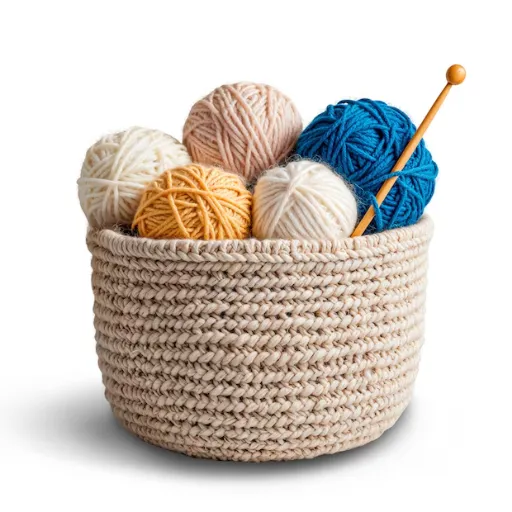
Types of Wool Yarn
Wool yarn comes in a variety of types, each offering unique properties to suit different projects and preferences. Below are the main types of wool yarn:
Merino Wool
Merino wool, sourced from Merino sheep, is renowned for its incredible softness and fine texture. It’s highly breathable and moisture-wicking, making it ideal for garments like sweaters, scarves, and baby clothes. Merino wool is also temperature-regulating, providing warmth in winter and cooling in summer. According to recent data, Merino wool accounts for approximately 50% of the global wool trade, reflecting its popularity among both hobbyists and the textile industry.
Cashmere
Cashmere wool comes from the undercoat of Cashmere or Kashmir goats. It is considered the warmest, softest, lightest, safest, and most luxurious fiber in the world. It has good insulation properties while remaining breathable. Compared to other wools, however, it is more delicate and requires a gentle touch when caring for it. Only around 6,500 tons are produced globally, with Inner Mongolia and China being the leading suppliers.
Wools of Alpaca
Coming from Alpacas, which are native to South America, the wool has been valued for its silky texture, durability, and hypoallergenic nature, making it a boon for craftspeople with sensitive skin. The alpaca yarn comes into two varieties—Huacaya (soft and fluffy) and Suri (silky and lustrous). Alpaca wool offers the choice of over 22 natural shades, thus it does away with the need for chemical dyes.
Mohair
Mohair is made from the fleece of Angora goats. It boasts a sheen and riotous colors and is often blended with other fibers for enhanced luster and strength. Mohair is regarded to be one of the strongest natural fibers and is used in making warm and durable clothing and accessories.
Shetland Wool
From sheep raised in the Shetland Islands of Scotland, this wool is coarser and stronger than Merino or Cashmere. It is highly prized for traditional Fair Isle knit designs and its longevity.
Lambswool
Lambswool is the wool obtained from the first shearing of a lamb or young sheep at about seven months of age. Such wool is extremely soft, elastic, and free from impurities, making it suitable for fine clothing and accessories.
Hence, by studying the properties of these different wool yarns, a craftsperson can choose the ideal wool for the job, whether soft and cozy for garments or hard and durable for intricate designs.
Benefits of Using Wool Yarn
Wool yarn is highly versatile and durable, offering the right temperament for the creation of a vast set of items. The natural elasticity of wool allows it to retain the dimensions of objects over time, a great feature when manufacturing apparel and accessories. This particular property lends strength to endure wear for extended periods and sometimes avoid bothering stretch claims.
This is one more share of the beneficial attributes that wool yarn provides: insulation. It can trap colossal amounts of air within the fiber with warmth in a cold state and maintain enough breathability to keep you from overheating. Hence, they are excellent options for clothing meant to keep you comfortable through climate changes. The ability to wick moisture away from the skin helps keep dryness on the other hand, making it even more practical and comfortable.
Also, the wool yarn is famous as a sustainable, biodegradable yarn. If harvested sustainably, wool production affects the environment much less than synthetic alternatives. Being biodegradable, any discarded wool fiber simply decomposes naturally and does not contribute to pollution. Hence, choosing wool yarn means embracing an eco-friendly process while attaining quality results in both crafting and design work.
Wool’s Unique Properties
Wool is an inherently unique material with features that render it quite versatile and valuable. One of its main claims to fame is temperature regulation. Wool fibers trap air: insulate warmth while being breathable so as to cool the body in hotter conditions. It is, therefore, an ideal fabric choice for clothes suitable for different climates.
Another awesome property of wool is its moisture-wicking ability. Wool can absorb moisture up to 30% of its weight without feeling damp on the skin, which allows this material to keep the skin dry and comfortable. This moisture management also inhibits the growth of odor-causing bacteria, meaning wool clothing tends to be fresher for a longer time than synthetic fabrics.
Lastly, wool is renowned for its elasticity and durability. Its fibers can bend up to 20,000 times without breaking, giving wool products a long lifespan. This elasticity also helps wool items retain their shape, even after repeated use. Combined with its softness and comfort, these unique properties make wool a standout material for high-quality, practical, and sustainable textile production.
Knit and Crochet Techniques

Using Acrylic Yarn for Knitting
Kid gloves. It is an unconventional choice and affordable for the knitter at any level. A synthetic fiber, it is light, fast, and durable, suitable for a gamut of knitting projects. Beginners, gripping an acrylic yarn makes sense because the yarn is cheap and available in an array of colors or textures.
One of the more prominent options with natural yarns is that one cannot wash the yarn in the machine. It shrinks, and then it pills-anathema for an item like a blanket or scarf or a child’s garment that will see much washing. Another good point acrylic has is that it does not fade; hence, the colour will remain as good-looking for many years.
However, we must be able to think about temperature sensitivity. Acrylic yarn may undergo melting or deformation at high temperatures, so ironing or blocking of finished pieces must always be done with care. Otherwise, acrylic yarn serves the knitter who needs a fabric that is convenient and very durable.
Utilizing Wool Yarn in Crochet
Wool yarn is a preferred choice for crochet mainly because of its natural elasticity and warmth. Being derived from the fleece of sheep, wool is therefore a renewable and ecological material. It is well-suited for all kinds of crochet projects-from some lovely crocheted blankets to wonderful scarves and sweaters that provide great warmth and are beautiful to touch. Several weights and textures match patterns of all kinds and designs.
Wool yarn can provide the benefit of warmth, even when wet, making it great for winter wear and accessories. This means that the yarn is fairly stretchable, thus retaining its shape well and granting resilience to the pieces made from it. Moreover, it works very well for patterns that need its stretch and structure, giving little or no compromise to the final product in terms of both function and beauty after a certain period.
Wool yarn may have several considerations. Intensity of washing depends on the type of wool. If washing is not gentle, or if special care is not given, the yarn might shrink or felt. Wool crochet projects, for instance, are usually maintained by hand-washing with cold water and air-drying. Wool yarn will go anywhere, and due to durability and versatility, it is regarded as a hot favorite choice among novice and expert crafters.
Combining Acrylic and Wool Yarns
Potentially working with both acrylic and wool yarns in a project can lead to some unique and versatile outcomes by giving the best of both fibers. Acrylic yarn is lightweight, cheap, and very easy to care for, which makes it a preferable choice for durable and low-maintenance projects. Wool is natural, warm, and has those awesome stretch properties, so it softens up the project and adds warmth. Using these two allows crafters to put some practicality into how they want their final item to look and feel.
Care and elasticity differences between yarns need to be kept in mind when working with two yarns. Wool is usually gentler, a cold-water hand-wash method, while acrylic yarn can be machine-washed. Thus, special attention to projects that combine these fibers is required to avoid shrinking or felting of the wool. The same weights and gauges are best used with both yarns so that the final product will be consistent in tension, thereby avoiding unevenness.
Acrylic-wool blends are suitable for applications like garments, accessories, and home décor. A wise combination of these two fiber types results in a rock-solid and supremely comfortable project that very pragmatically fits its care requirements. This blend is also liberating in creating styles for it extends into the realm of appearance and texture that few individual fibers offer, opening avenues for designs tailored to a variety of tastes.
Applications of Acrylic and Wool Yarns
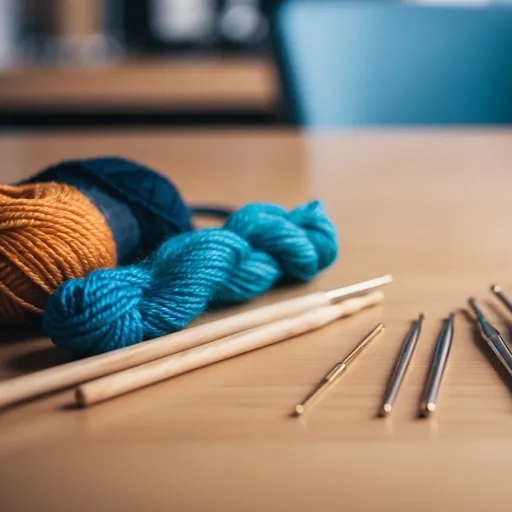
Fashion Industry Uses
Due to the unique combination of durability, warmth, and visual beauty construedby acrylic and wool yarns are considered by-and-large yet branching-worthy materials by the designers of the fashion Industry. They are commonly used for sweaters, scarves, hats, and other winter garments because of their insulating ability. Wool imparts natural warmth and resilience, while acrylic yarns add softness, ease of care, and colorfulness. Thus, garments made from the two materials can be stylish and functional in very many ways.
Both acrylic and wool yarns are highly appreciated in recreations involving texture and pattern. Designers often discuss the use of these yarns for knitwear that requires the holding of shapes and details for the enhanced appearance of the garments. Also, the easy molding of acrylic fibers permits a limitless spectrum of color for the designers to work with so that they can welcome bright, forward colors for their collections, thus catering to varied consumer preferences.
Moreover, with the affordability and easy availability of acrylic-wool blends, the world of fashion seems open to both high-end and budget fashion designers. They achieve a perfect balance between price and quality, giving potential for large-scale garment manufacturers as well as one-of-a-kind hand-woven pieces. Acrylic and wool yarn types have versatility, comfort, and adaptiveness that keep them relevant in the apparel industry to fulfill the diverse desires and requirements of designers and customers alike.
Home Textiles and Decor
For making durable and stylish textiles at home, acrylic and wool are considered indispensable. The peculiarities of these materials make them best suited for items like rugs, blankets, cushion covers, and curtains. Wool also has natural insulating and moisture-wicking properties, making it suitable for providing warmth and comfort to household items. Acrylic is cheaper and offers resistance to wear, fading, and mildew, thus providing longevity to the products even when used quite frequently.
Therefore, acrylic with wool provides a balance of practicality and aesthetic appeal in home decor. This combination finds its products balancing function with versatility in design to address all modern, rustic, or traditional styles. The myriad textures and colors available with these materials can be worked upon to meet almost every interior design theme, allowing designers to come up with complementary pieces suitable for any living ambience.
Easy maintenance is an additional reason that has enhanced their popular appeal in the home textiles domain. Stain-proof and fast drying, acrylics are user-friendly for a busy household, while wool has natural resilience that maintains the shape of articles and provides longevity. Together, they make a fine blend of beauty, comfort, and pragmatism in daily life.
Crafts and DIY Projects
Crafts, artistic expressions, and DIY projects all allow one to be creative while transforming an idea into something practical and decorative. These materials, such as acrylic and wool blends, are ideal for any type of DIY project, given their versatility, durability, and interesting properties. A person could weld acrylic and wool into pretty much any medium-working project like weaving and knitting or sewing-creating clothes, home décor items, or gifts.
Acrylic is the easiest to handle and works fast with. Stain-resistant to the arrival of colored dyes, this fabulous acrylic gave a sudden release of color thoughts into vibrant bold designs. Wool brings an all-natural texture to whatever it is affecting, coupled with a certain smooth warmth. Elasticity makes it suitable for knitting warm garments or creating plush toy-like stuffed animals.
A world of effective opportunities with this combination includes all of the diverse bright hues of acrylic and the gewgaw softness of wool. Such a blend benefits the woven throws, handcrafted rugs, or even intricate wall hangings by being durable and visually appealing. These projects would beautify living areas, while offering a pleasant, satisfying means to unwind from creativity.
Care and Maintenance of Yarn
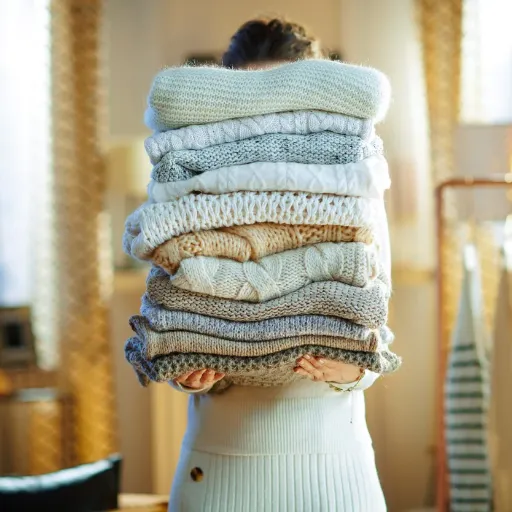
Washing and Drying Guidelines
Proper care of yarn items and maintaining their long life and appearance is done. Washing yarn-produced pieces would first need to look at the care label or yarn packaging for specific instructions. It is most probably recommended to handwash any delicate or handmade item since shrinkage or damage could arise due to the treatment of these pieces, either intentional or unintentional. Use lukewarm water and mild detergent, handling the material gently and not wringing it excessively. If the yarn is machine washable, however, use a gentle cycle and place the item inside a mesh laundry bag for added protection.
Do not use heat to treat dry indirect sunshine or heaters since that would make pawning away of alterations regarding tethe xture and shape of the yarn. Then place the item flat on the towel in its original shape, soaking up water by rolling the towel. After this step, unfold to air-dry placed flat away from direct sunlight or alternate heat sources, as these could weaken the fibers.
Before you store the item, clean and dry it thoroughly so it will not get mildewed. Store the item inside a breathable bag or container that will protect it against dust or pests. These tips will keep the yarned beauty and the works for years ahead.
Storage Tips for Yarn
The way yarn is stored may indeed affect its quality and longevity. The most important precaution is to keep yarn clean and dry before storing it to avoid mildew and smell. Do not cram yarn into containers because compressed yarn may never recover its shape and give in to loss of elasticity. Open bases or fabric bins of sorts are encouraged so air can go through and prevent moisture buildup.
Direct sunlight must be avoided at all costs. The sun can fade color and weaken fibers. Keep yarns stored away from any warmer inclination in the vicinity and in the coolness of temperature, preferably dry. Humid places shall be avoided such as basements and bathrooms and in the warming ultraviolet glare of heat sources, such as radiators and vents, etc., detrimental drying of the yarn fibers occurs.
Finally, protect your yarn from moths and other insects by making sure it is stored properly. Use natural repellants such as cedar blocks or lavender sachets to keep pests away. Plastic bags are best avoided for storing yarn long-term; they trap moisture and will encourage damage. These tips will ensure your yarn remains beautiful for generations.
Extending the Life of Your Projects
For extending the life of finished projects, adequate care and maintenance would certainly be a wise decision. Firstly, it is very important to always consider any applicable washing and cleaning instructions concerning the materials used in a project. Nevertheless, handwashing may be the best for delicate fibers such as wool, using lukewarm water and a mild detergent, while tougher materials may be safe for gentle cycle washing in the machine. Do not use strong cleaning agents or bleach because they may exacerbate the damage to fibers or create an uneven discolored pattern on your items.
Secondly, store your projects in a cool, dry place, and away from direct sunlight. Prolonged exposure to sunlight can cause fading, while moisture or humidity will provide an environment where mold and mildew are ready to flourish. For the best results, consider breathable storage solutions such as cotton bags that allow air circulation and prevent moisture from getting trapped. On the other hand, periodically inspecting your stored items will be the best way to detect damage early and promptly take steps to rectify the problem.
It goes without saying that your projects must be protected from pests like moths that attack delicate fibers. Use natural repellents such as cedarwood or lavender sachets to discourage insects from damaging your items. Your projects must be cleaned and inspected for wear regularly to ensure that they remain in perfect shape. If you apply these few principles, you will be able to maintain your creations in good shape for many years.
Frequently Asked Questions (FAQ)
Q: What is acrylic wool really, and how different can it be from conventional wool?
A: Acrylic wool is a fiber of synthetic nature that mostly consists of polyacrylonitrile, a certain petroleum-based polymer. In contrast with standard wool, which is obtained from fleece from animal life, acrylic wool is manufactured, and it provides value in simple care, an inexpensive price, and a fine texture of yarn. It is widely used in knitting as well as crocheting, especially for modern accessories and home décor.
Q: Is acrylic wool good for knitted and crocheted work?
A: Yes, acrylic wool is good for knitting and crocheting. It exists in varying weights, such as worsted, super-bulky, which works well for almost anything from making potholders to actual garments. Another nice benefit is that it takes colors so very well, giving you vibrant and beautiful finished items.
Q: Is it a good choice for people with allergies?
A: Acrylic wool is generally considered hypoallergenic and suitable for those allergic to animal fibers. Yet, some may still react to synthetics, so if in doubt, test with a small patch.
Q: How is acrylic wool different from wool and acrylic yarn blends?
A: Acrylic/wool blends give you the best of both worlds! These blends provide the softness and warmth of wool with the ease of care and durability of acrylic. They are used in finer grade production and appear in brand names such as Lion Brand Yarn and Mary Maxim.
Q: What is the best way to take care of acrylic wool items?
A: It’s a matter of easy care for acrylic wool. Most garments from acrylic wool are suitable for machine wash in the gentle cycle and tumble-dry on low heat. Follow the care label instructions always: some blends might need processing differently.
Q: Are there any ecological concerns related to acrylic wool?
A: Acrylic wool, on the other hand, is durable and simple to maintain, yet they are synthetic and can pollute the environment with microplastics during washing. High-grade acrylic wool, followed by washing it in a Guppyfriend bag, may counteract the shedding of these fine fibers.
Q: What is the difference between worsted weight and super bulky acrylic wool?
A: Worsted-weight acrylic wool is a medium-thickness yarn that can be used for many applications, while super bulky acrylic wool is thick enough to give fast projects and cozier finishes. It all depends on your layered wants and textural preferences.
Q: Can acrylic wool be used for gradient work?
A: Yes, indeed! You can get acrylic wool in many gradient colorways, and these are perfect for those beautiful gradient effects in knitting or crocheting. Hobbii and Plymouth are merely a couple of options offering lovely gradient skeins for your projects.
Q: What should one be considering when choosing an acrylic wool for a project?
A: Choosing your acrylic wool for a project depends mainly on what the project is, its desired softness, and perhaps the weight of the yarn. For instance, if you are aiming at something soft for a blanket or garment, then you are looking for super soft acrylic wool. If you want to make something that needs to last, like potholders, you could reckon that a worsted or super bulky acrylic wool will do. Also, check the brand and get a good quality for better results.
References
- The Ultimate Guide to Acrylic Yarn – A comprehensive guide comparing acrylic yarn to natural fibers like wool and cotton, along with its uses.
- Acrylic Fiber – Wikipedia – An overview of acrylic fiber, its properties, and its applications in textiles.
- What Is Acrylic Yarn Good For? – A detailed look at the benefits and uses of acrylic yarn in clothing, home decor, and crafts.
- All About Knitting Acrylic Yarn – Insights into the combination of acrylic and wool, highlighting its durability and care benefits.
- Wool vs. Acrylic: Which Yarn to Use and Why – A comparison of wool and acrylic yarn, focusing on their properties and best use cases.









